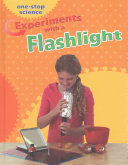2018 School Spending Survey Report
Experiments with a Flashlight
9781625881410.
ea vol: 32p. (One-Stop Science). diag. further reading. glossary. illus. index. photos. websites. Smart Apple. 2016. lib. ed. $21.95. ebk. $31.35.
COPY ISBN
VERDICT Good choices where additional ideas for science experiments are needed.
Each volume includes several activities--widely varying in quality--to introduce mid-elementary students to physics and chemistry concepts. Although the concise steps and bright photographs of children engaged in the experiments imply that these are straightforward, the directions are often vague, materials other than the title items need to be obtained, and the science is poorly explained. Reading list, websites. Glos., ind. Review covers the following One-Stop Science titles: Experiments with a Flashlight, Experiments with a Lemon, Experiments with a Ruler, and Experiments with Water.
ALREADY A SUBSCRIBER? LOG IN
We are currently offering this content for free. Sign up now to activate your personal profile, where you can save articles for future viewing





Be the first reader to comment.
Comment Policy:
Comment should not be empty !!!